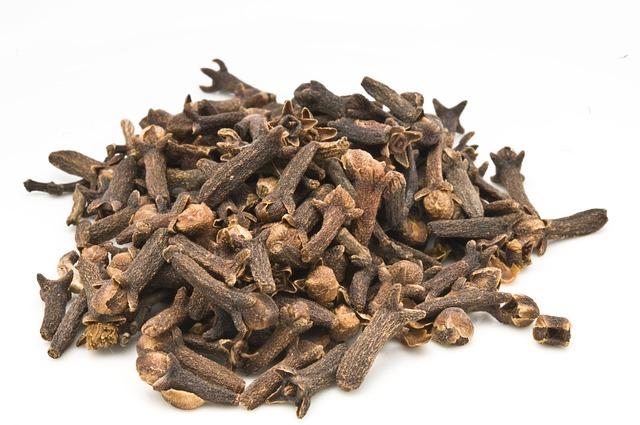Are you dealing with unbearable wisdom tooth pain? Learn about effective home remedies that can bring you much-needed relief.
1. Understanding Wisdom Tooth Pain: Causes and Symptoms
Causes of Wisdom Tooth Pain
Wisdom tooth pain can be caused by various factors. Here are some common causes to watch out for:
– Impacted Wisdom Teeth: When there is not enough space for the wisdom teeth to emerge properly, they can become partially or completely trapped beneath the gum line. This can lead to pressure and pain.
– Infection: If bacteria accumulate around the wisdom tooth or within the neighboring gum tissue, an infection can occur. This may result in throbbing pain, swelling, and tenderness.
– Misalignment: Sometimes, wisdom teeth may grow in at an angle or horizontally, causing them to press against neighboring teeth. This misalignment can lead to discomfort and pain.
Symptoms of Wisdom Tooth Pain
Recognizing the symptoms of wisdom tooth pain is crucial for early detection and prompt treatment. Keep an eye out for the following signs:
– Jaw pain: Wisdom tooth pain often manifests as dull, aching pain in the jaw, especially at the back of the mouth.
– Gum swelling and redness: Inflammation of the surrounding gum tissue is a common symptom. The area may also feel tender to touch.
– Difficulty opening the mouth: You might experience limited jaw movement or find it challenging to fully open your mouth due to wisdom tooth pain.
– Bad breath: Accumulation of bacteria around the impacted tooth can result in a foul odor, which can contribute to bad breath.
It’s important to note that everyone’s experience with wisdom tooth pain can vary. If you suspect any issues related to your wisdom teeth, it’s best to consult a dental professional for an accurate diagnosis and appropriate treatment.
2. Natural Home Remedies for Wisdom Tooth Pain: Tried and Tested Solutions
The excruciating pain caused by wisdom teeth can greatly affect your daily life. Fortunately, there are several natural remedies that can help alleviate the discomfort and promote healing without resorting to medication or invasive procedures. Here are some tried and tested solutions you can try at home:
- Saltwater rinse: Mix half a teaspoon of salt into a glass of warm water and use it as a mouthwash. Gargle the solution in your mouth for 30 seconds before spitting it out. This simple remedy can help reduce inflammation and fight bacteria that may be causing the pain.
- Clove oil: Dip a cotton ball in clove oil and gently apply it to the affected area of your gums. Clove oil is known for its analgesic and anti-inflammatory properties, which can provide temporary relief from wisdom tooth pain.
- Peppermint tea: Brew a cup of peppermint tea and let it cool down. Once the tea is cool enough, swish it around in your mouth for a couple of minutes before spitting it out. This herbal tea can help numb the area and reduce inflammation, providing you with some relief.
These natural remedies have been used for generations to address wisdom tooth pain. However, it is important to note that they may only provide temporary relief. If the pain persists or worsens, it is recommended to consult your dentist for a proper diagnosis and appropriate treatment.
3. Soothing Sage Tea: An Ancient Healer for Wisdom Tooth Discomfort
Sage tea has long been revered for its powerful healing properties, particularly when it comes to relieving discomfort associated with wisdom tooth pain. This ancient herbal remedy has been used for centuries to soothe inflammation, reduce swelling, and alleviate the intense pain that often accompanies wisdom tooth eruption.
So, what makes sage tea such an effective healer? First and foremost, sage contains compounds with potent anti-inflammatory properties, making it a natural choice for easing discomfort. By reducing the intensity of inflammation, sage can help alleviate the throbbing pain and tenderness that often plague those with wisdom tooth issues.
Additionally, sage tea can help minimize swelling around the affected area. The tannins found in sage act as astringents, constricting blood vessels and reducing the swelling around the wisdom tooth. This not only provides much-needed relief but also aids in promoting quicker healing.
Moreover, sage tea can provide a numbing effect, temporarily reducing the sensation of pain and discomfort. The natural compounds found in sage help to dull the nerve endings, bringing much-needed respite from the intense pain associated with wisdom tooth discomfort.
When preparing sage tea, simply boil water and steep a handful of fresh or dried sage leaves for around 10 minutes. Strain the mixture, allowing it to cool until it reaches a comfortable temperature. You can either sip the tea or use it as a mouth rinse, swishing it around the affected area to target inflammation directly. Regular use of sage tea can provide ongoing relief and support healing, making it an invaluable asset in managing wisdom tooth discomfort.
4. Clove Oil: Nature’s Anesthetic for Wisdom Tooth Pain Relief
Wisdom tooth pain can be excruciating, affecting your ability to eat, speak, and concentrate. Fortunately, nature has provided us with a powerful solution: clove oil. Derived from the dried flower buds of the clove tree, this natural anesthetic has been used for centuries to alleviate toothaches and reduce inflammation.
The active ingredient in clove oil is eugenol, a compound known for its analgesic and antiseptic properties. When applied topically, clove oil numbs the affected area, providing fast-acting pain relief. Additionally, it helps to disinfect the area, preventing infection and promoting quicker healing.
Using clove oil for wisdom tooth pain is simple and effective. Here’s how to use it:
- Start by rinsing your mouth with warm saltwater to clean the area around the affected tooth.
- Take a cotton ball or swab and dip it into clove oil.
- Gently dab the cotton ball onto the painful tooth or gum area.
- Leave it in place for 15-20 minutes, allowing the oil to penetrate and numb the area.
- Rinse your mouth with warm saltwater again to remove any residue.
Repeat this process 2-3 times a day, or as needed, for relief from wisdom tooth pain. However, it’s important to note that clove oil should never be directly applied to the gum tissue as it can cause irritation or burning.
When it comes to relieving wisdom tooth pain naturally, clove oil has proven to be a reliable option. Its anesthetic properties and ability to reduce inflammation make it a go-to remedy for many individuals. Remember to consult with your dentist if the pain persists or if you experience any adverse reactions.
5. Gargle with Saltwater: A Simple Solution for Alleviating Wisdom Tooth Pain
If you’re experiencing wisdom tooth pain and looking for a straightforward remedy, gargling with saltwater can provide much-needed relief. This age-old technique is known for its effectiveness in soothing discomfort and reducing inflammation in the oral cavity.
Here’s how it works:
- Saltwater solution: Mix half a teaspoon of salt in 8 ounces of warm water until dissolved. The solution should be comfortable to gargle with.
- Gentle gargling: Take a small sip of the saltwater solution and tilt your head back to allow the liquid to reach the affected area. Gently swish the mixture around your mouth, ensuring it reaches all corners, especially near the wisdom tooth. Try to gargle for at least 30 seconds before spitting out.
- Repeat as needed: You can repeat this process multiple times a day, especially after meals or whenever you feel discomfort. Regular gargling with saltwater can help cleanse the area, reduce inflammation, and promote healing.
Remember, gargling with saltwater is not a substitute for professional dental care. If the pain persists or worsens, it’s essential to consult your dentist for a thorough examination and appropriate treatment.
6. Cold Compresses: Cooling down the Pain of Impacted Wisdom Teeth
When it comes to relieving the discomfort associated with impacted wisdom teeth, cold compresses can work wonders. By applying a cold compress to your cheek, you can effectively reduce swelling and numb the area, providing much-needed relief. Here’s what you need to know about using cold compresses to cool down the pain:
To create a cold compress, follow these simple steps:
- Take a clean cloth or towel.
- Dampen it with cold water or wrap some ice cubes in it.
- Apply the compress gently to the affected area for about 15 minutes.
It’s important to note that you should never apply ice directly to your skin, as it can cause damage. Instead, wrap the ice or cold compress in a cloth to prevent any potential harm.
By regularly using cold compresses on your impacted wisdom teeth, you can not only reduce pain but also minimize swelling and inflammation. This simple remedy can provide temporary comfort and make the healing process more bearable.
7. Numbing Nerve Pain: Chamomile Tea’s Role in Easing Wisdom Tooth Discomfort
Wisdom tooth discomfort can be an agonizing experience, but did you know that chamomile tea can help alleviate the numbing nerve pain associated with it? This herbal remedy has been used for centuries to calm and soothe various ailments, including mouth pain. Let’s explore the reasons why chamomile tea is often hailed as a natural solution for easing wisdom tooth discomfort.
1. Anti-inflammatory Properties: Chamomile tea contains compounds, such as chamazulene and bisabolol, which possess powerful anti-inflammatory properties. These compounds help reduce swelling and inflammation around the wisdom tooth, providing relief from the throbbing pain.
2. Relaxing Effects: Sipping on a warm cup of chamomile tea can have a relaxing effect on the body and mind. This can help alleviate the stress and anxiety often associated with wisdom tooth discomfort, promoting a sense of calmness and aiding in pain management.
3. Numbing Sensations: The numbing properties of chamomile tea can offer temporary relief by desensitizing the nerves around the affected area. This can help minimize the sharp, shooting pains often experienced with wisdom tooth discomfort.
Although chamomile tea may not completely eliminate wisdom tooth pain, it can certainly play a supportive role in easing the discomfort. It is important to note that consulting with a dental professional is essential to treat wisdom tooth issues effectively.
8. Healing Herbal Rinses: Sage and Peppermint Infusions for Wisdom Tooth Relief
Wisdom tooth pain can be a real nuisance, making it difficult to eat, talk, or even concentrate on daily tasks. Thankfully, there are natural remedies like healing herbal rinses that can provide much-needed relief. Two powerful herbs, sage and peppermint, can work wonders in soothing wisdom tooth discomfort.
Sage infusion: Sage, a medicinal herb known for its antibacterial and anti-inflammatory properties, can help alleviate pain and reduce inflammation around the affected area. To create a sage infusion, follow these simple steps:
- Boil water and let it cool for a few minutes.
- Add a handful of dried sage leaves to the water.
- Cover the mixture and let it steep for 10-15 minutes.
- Strain the infusion and allow it to cool completely.
- Once cooled, use the sage infusion as a mouth rinse up to three times a day.
Peppermint infusion: Peppermint is another herb renowned for its analgesic and numbing properties, providing quick relief from wisdom tooth pain. Here’s how you can create a peppermint infusion:
- Bring water to a boil and let it cool slightly.
- Add a handful of fresh or dried peppermint leaves to the water.
- Cover the mixture and let it steep for 10-15 minutes.
- Strain the infusion and allow it to cool down.
- Once cooled, use the peppermint infusion as a mouth rinse several times a day for relief.
Both sage and peppermint infusions can be incredibly effective in reducing pain and inflammation associated with wisdom teeth. However, if the pain persists or worsens, it is important to consult a dentist for further evaluation and treatment options.
In conclusion, these home remedies can provide temporary relief for wisdom tooth pain. However, if the pain persists, it is best to consult a dentist for proper treatment. Remember to maintain good oral hygiene and follow the dentist’s advice for long-term relief.





